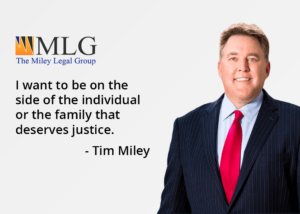Essential Car Insurance Coverage and Recommendations
Your insurance car policy must cover the following:
- Liability coverage
- Medical payments coverage
- Uninsured motorist coverage
- Underinsured motorist coverage
Let’s talk about this one by one.
Liability coverage
Liability coverage protects you in case you cause harm to someone while operating your car. This coverage is beneficial to you.
Your insurance coverage applies when you are driving your car. However, it also extends to anyone driving your car since the coverage follows the vehicle.
Your spouse, parents, kids, and other family members might be driving your car and could be involved in an accident, causing harm to someone. In such cases, the liability coverage will be there to protect them as well.

How much coverage do you need?
We strongly recommend having a minimum of $100,000 per person and $300,000 per occurrence in liability coverage.
We feel that way very strongly because if you hurt someone and their injuries are worth more than your coverage, they can come after your personal assets. You don’t want that, so you must have enough coverage to protect yourself fully.
Medical payments coverage
Medical payments coverage is the type of coverage that pays for medical expenses incurred by anyone as a result of using an automobile. It covers anyone using or inside that automobile. However, it does not protect someone in another car that you may collide with, or that collides with you.
It’s important to note that it’s not just the vehicle’s driver or owner who benefits from this coverage. Any passenger in your car who incurs medical expenses due to the vehicle’s operation can access the medical payments coverage.
How much should you have?
We strongly recommend having at least $25,000 worth of medical payments coverage. This is because if someone is injured and incurs medical expenses resulting from an automobile accident, it is highly likely that their medical expenses will approach or exceed $25,000.
Now, there is one caveat or exception to consider regarding medical payments coverage.
If you have health insurance coverage through your workplace, you may choose not to pay the extra premium for medical payments coverage. This is because that coverage is optional and comes with an additional premium charge.
However, if you have health insurance that would otherwise cover your medical expenses from an automobile wreck, you may still want to consider getting medical payment coverage. This is to ensure that others in your vehicle who may not have such healthcare coverage are protected.
Uninsured motorist coverage
Uninsured motorist coverage is a mandatory requirement if you have an insurance policy with liability coverage. Having liability coverage automatically necessitates having uninsured motorist coverage as well.
Uninsured motorist coverage holds significant importance because it provides protection if you are hit and injured by a driver who does not have insurance. In such cases, your uninsured motorist coverage will safeguard you.
To put it simply, if an uninsured individual injures you, your uninsured motorist coverage will come into play and provide the necessary protection when you experience injuries.
Uninsured motorist coverage is required if you have an insurance policy and liability coverage; if you have liability coverage, you must have uninsured motorist coverage.
Underinsured motorist coverage
Underinsured motorist coverage protects you if someone driving a car hits you and causes you to incur medical expenses and other damages that exceed their insurance coverage.
To illustrate, let’s consider the example of West Virginia, where individuals must have minimum insurance limits of $25,000 per person and $50,000 per occurrence.
Suppose another person with $25,000 coverage hits you, resulting in injuries that lead to medical bills amounting to $100,000. In this scenario, how will the other person pay the remaining $75,000 difference when their insurance coverage is only $25,000?
The solution lies in your underinsured motorist coverage. This coverage acknowledges that the other person involved is underinsured. By acquiring underinsurance coverage, you can protect yourself in an accident caused by an underinsured individual.
How much underinsured motorist coverage should you have?
We strongly recommend obtaining $100,000 per person and $300,000 per occurrence coverage for underinsurance.
We hope you find this information useful.


